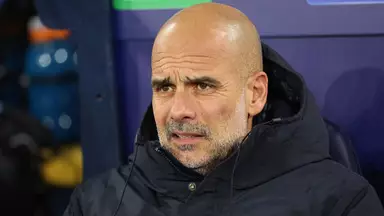Arsenal’s Pursuit of Benjamin Sesko: A Comprehensive Analysis of the RB Leipzig Striker’s Premier League Readiness

The summer transfer window of 2025 has arrived with its customary blend of speculation, ambition, and strategic maneuvering. Among the most intriguing storylines emerging from this period is Arsenal’s determined pursuit of RB Leipzig’s towering striker Benjamin Sesko. As the Gunners continue their quest to bridge the gap between themselves and Manchester City at the summit of English football, the acquisition of a prolific goalscorer remains their most pressing priority.
Reports from Germany suggest that Arsenal have intensified their negotiations for the 22-year-old Slovenian international, with discussions progressing favorably between all parties involved. The potential transfer represents more than just another big-money signing; it symbolizes Arsenal’s commitment to addressing the goalscoring deficiency that has consistently undermined their title aspirations in recent seasons.
Benjamin Sesko’s current market valuation stands at €70 million according to Transfermarkt’s assessment, reflecting his rapid development and growing reputation as one of Europe’s most promising young strikers. However, the reality of modern transfer negotiations means that Arsenal are likely to face a significantly higher financial commitment. Industry sources suggest that securing Sesko’s services could require an investment ranging between €80 million and €100 million, a figure that underscores both RB Leipzig’s reluctance to part with their prized asset and the premium attached to proven goalscorers in today’s inflated market.
This substantial financial outlay would represent one of Arsenal’s most significant transfer investments in recent years, positioning alongside previous marquee signings that have shaped the club’s modern identity. The Gunners’ willingness to commit such resources demonstrates their recognition that clinical finishing could be the final piece in their championship puzzle.
The negotiations have reportedly reached an advanced stage, with all parties expressing cautious optimism about reaching a mutually beneficial agreement. Arsenal’s approach has been characterized by professionalism and persistence, qualities that have served them well in previous complex transfer dealings. The club’s hierarchy, led by sporting director Edu and manager Mikel Arteta, have identified Sesko as their primary target while simultaneously exploring alternative options to ensure they don’t find themselves empty-handed should complications arise.
Sesko’s statistical output during the 2024/25 campaign provided compelling evidence of his continued development and growing maturity as a top-level striker. Recording 27 goal contributions across all competitions, comprising 21 goals and 6 assists, the Slovenian demonstrated remarkable consistency and versatility in his offensive contributions. While these numbers may not immediately leap off the page as extraordinary, they represent a significant improvement from his previous seasons and suggest a player entering his prime years with considerable room for further growth.
The context surrounding these statistics adds additional layers of significance to Sesko’s performance. Operating within RB Leipzig’s high-intensity, tactically sophisticated system, he has been required to adapt to multiple roles and responsibilities beyond simple goal-scoring. His ability to contribute assists while maintaining his primary function as a finisher demonstrates the kind of well-rounded skillset that modern football demands from elite strikers.
Throughout his career, spanning 224 games across various competitions, Sesko has accumulated 100 goals and 26 assists, numbers that reflect both his consistency and his potential for future improvement. His conversion rate and decision-making in the final third have shown marked improvement over recent seasons, suggesting that his best years remain ahead of him.
The progression in his market value tells its own story of rapid development. From an initial valuation of €24 million upon his arrival at RB Leipzig, his worth has nearly tripled to €70 million over just two seasons. This dramatic increase reflects not only his improved statistical output but also the growing recognition of his potential among Europe’s top clubs.
Alexander Binder, Transfermarkt’s Chief Editor in Germany, provides crucial insights into Sesko’s playing characteristics that explain his growing appeal to Premier League clubs. Standing at an imposing 6’5″, Sesko possesses the physical attributes that make him naturally suited to the demands of English football. His combination of pace and power creates a unique profile that can trouble even the most organized defenses.
Sesko’s effectiveness in transitional play represents one of his most valuable assets. His ability to link play between midfield and attack, combined with his pace on the counter-attack, makes him particularly suited to teams that employ high-tempo, direct styles of play. This characteristic aligns perfectly with Arsenal’s evolving tactical approach under Mikel Arteta, where quick transitions and vertical passing have become increasingly prominent features.
His aerial dominance adds another dimension to his game that could prove invaluable in the Premier League’s physical environment. Standing at 6’5″, Sesko possesses a significant height advantage over most center-backs, making him a constant threat from set-pieces and crossed balls. This physical presence also allows him to hold up play effectively, bringing teammates into attacking positions and creating space for others to exploit.
However, Binder’s analysis also highlights areas where improvement remains necessary. The comparison to Liverpool’s Darwin Núñez, while potentially concerning for some Arsenal supporters, provides valuable context about Sesko’s current development stage. Like Núñez, Sesko represents a raw talent with enormous potential but requiring tactical refinement and consistent application to reach elite levels.
The finishing aspect of Sesko’s game has been identified as the primary area requiring development. Statistical analysis reveals that he ranked among the players with the most significant chances missed during both the 2023/24 and 2024/25 Bundesliga campaigns. This tendency to spurn clear-cut opportunities could prove problematic in the Premier League, where chances are often at a premium and clinical finishing frequently determines outcomes.
The inevitable comparisons between Sesko and Manchester City’s Erling Haaland stem from their remarkably similar career trajectories. Both players developed their early professional careers at Red Bull Salzburg before making high-profile moves to Bundesliga clubs. Both possess identical physical statures at 6’5″, and both have been identified as generational talents from relatively young ages.
The parallel paths these players have followed provide a useful framework for understanding Sesko’s potential future development. Haaland’s explosive impact upon arriving at Manchester City demonstrated how quickly the right player can transform a team’s offensive capabilities. His 52 goals across all competitions during his debut season in English football directly contributed to City’s treble success and highlighted the value of prolific goalscoring in modern football.
For Arsenal, the prospect of acquiring their own version of Haaland represents an tantalizing possibility. The Gunners have consistently fallen short in recent title races, with their inability to convert chances into goals proving decisive in critical moments. The 2023/24 season exemplified this pattern, as Arsenal’s creative play and tactical sophistication were undermined by a lack of clinical finishing when it mattered most.
Sesko’s youth represents both an opportunity and a challenge. At 22 years old, he possesses the potential for significant improvement under proper guidance, but he also lacks the immediate impact that more established strikers might provide. This dynamic creates an interesting decision point for Arsenal: prioritize immediate results with a proven performer or invest in long-term potential with Sesko.
The development trajectory that has seen Sesko’s market value nearly triple over two seasons suggests that his best years remain ahead of him. If Arsenal can provide the right environment for continued growth, they may well have found their answer to City’s Norwegian sensation. However, the inherent risks associated with signing unproven talents in crucial positions cannot be ignored.
Mikel Arteta’s tactical acumen and ability to maximize player potential represent crucial factors in evaluating Sesko’s potential success at Arsenal. The Spanish manager has consistently demonstrated his capacity to adapt systems and extract unexpected performances from players operating outside their natural positions. The most striking example of this flexibility emerged during Arsenal’s injury crisis, when Arteta successfully deployed central midfielder Mikel Merino as a striker.
Merino’s transformation from defensive midfielder to effective striker yielded remarkable results, with the Spaniard contributing six goals and three assists across twelve games in his unfamiliar position. His performances, including a memorable brace against Leicester City, demonstrated Arteta’s tactical sophistication and his ability to identify and develop unexpected solutions to tactical challenges.
This tactical flexibility bodes well for Sesko’s potential integration into Arsenal’s system. If Arteta can extract such productivity from a naturally defensive player, the possibilities for developing a genuine striker with Sesko’s physical and technical attributes appear limitless. The manager’s track record of improving players through tactical innovation and individual coaching provides reason for optimism regarding Sesko’s development.
Arteta’s preference for fluid, possession-based football with quick transitional elements aligns well with Sesko’s strengths. The Slovenian’s pace and physicality make him ideally suited to the kind of direct, vertical play that has become increasingly prominent in Arsenal’s attacking approach. His ability to hold up play and bring others into the game could prove invaluable in breaking down defensive teams that have historically caused Arsenal problems.
The tactical system that Arteta has developed at Arsenal emphasizes the importance of movement, pressing, and positional flexibility from all players. Sesko’s work rate and willingness to contribute defensively, demonstrated during his time at RB Leipzig, suggest he possesses the attributes necessary to thrive within this demanding framework.
The potential arrival of Sesko would create fascinating dynamics within Arsenal’s existing squad structure. Kai Havertz, despite missing significant portions of the previous season through injury, remains highly regarded by Arteta and is expected to continue playing a prominent role. The German’s versatility allows him to operate effectively both as a striker and in deeper midfield positions, providing Arteta with valuable tactical options.
The comparison between Sesko and Havertz reveals interesting contrasts in their respective profiles. While both players possess similar market valuations (€70 million for Sesko versus €65 million for Havertz), their ages and experience levels differ significantly. Havertz, at 26, represents a more established performer with Premier League experience, while Sesko offers greater long-term potential and physical presence.
Competition between these players could prove beneficial for Arsenal’s overall performance levels. Havertz’s tendency to miss crucial chances has been a source of frustration for supporters, and the arrival of an alternative option could provide the competitive pressure necessary to elevate both players’ performances. The prospect of rotation and tactical flexibility that two high-quality strikers would provide could prove invaluable during the demanding schedule that modern football requires.
Arsenal’s interest in Sporting’s Viktor Gyökeres adds another layer to their striker search, suggesting that the club is prepared to pursue multiple targets simultaneously. This approach demonstrates the importance they place on resolving their goalscoring issues and their determination not to enter another season with the same limitations that have hindered their progress.
Sesko’s journey through European football provides valuable context for understanding his current position and future potential. His decision to reject Manchester United’s advances in favor of remaining within the Red Bull system demonstrates both loyalty and strategic thinking that has served him well. The continuity of playing style and tactical approach between Red Bull Salzburg and RB Leipzig allowed him to continue his development without the disruption that often accompanies moves between dramatically different footballing philosophies.
The interview Sesko gave to Transfermarkt in 2023 revealed his thoughtful approach to career decisions. His emphasis on finding an environment with compatible playing styles over potentially more glamorous alternatives suggests a maturity that augurs well for his future development. This decision-making process ultimately led to his selection as the 20th player to move from Salzburg to Leipzig, joining an impressive alumni network that includes several current top-level performers.
Manchester United’s alternative choice of Rasmus Højlund provides an interesting comparison point for evaluating different approaches to striker recruitment. The Danish international’s mixed performances during his debut Premier League season highlight the challenges that young strikers face when adapting to English football’s unique demands. The comparison between Højlund’s current market value of €35 million and Sesko’s €70 million valuation suggests that the Slovenian’s development has progressed more favorably.
The broader context of striker transfers in recent years demonstrates the premium that elite clubs place on proven goalscorers. The fees commanded by players like Haaland, Mbappé, and other top-tier strikers have established new benchmarks for transfer valuations. Within this context, Arsenal’s willingness to invest €80-100 million in Sesko represents both the current market reality and their recognition of the position’s crucial importance.
The fundamental question surrounding Sesko’s potential Arsenal move concerns his readiness for Premier League football’s unique challenges. Alexander Binder’s assessment that “the Premier League looks like a natural fit for him” provides encouraging perspective from someone with intimate knowledge of his development. The combination of pace and physicality that defines Sesko’s game appears well-suited to English football’s traditionally physical nature.
However, several factors complicate this optimistic assessment. The statistical evidence highlighting his tendency to miss significant chances raises concerns about his ability to convert the limited opportunities that Premier League football often provides. Unlike the Bundesliga, where tactical approaches can vary dramatically between teams, the Premier League’s consistently high competitive level means that clear-cut chances are frequently scarce.
The tactical sophistication required to succeed under Arteta’s management presents another potential challenge. Arsenal’s system demands high levels of positional awareness, movement coordination, and technical precision from all players. While Sesko has demonstrated these qualities intermittently at RB Leipzig, the consistency required at Arsenal represents a significant step up in expectations.
The psychological aspects of adapting to Premier League football cannot be overlooked. The intense media scrutiny, passionate fan expectations, and pressure associated with big-money transfers have derailed promising careers in the past. Sesko’s relatively calm personality and measured approach to career decisions suggest he possesses the mental strength necessary to handle these pressures, but they remain unknown quantities until tested.
The financial commitment required to secure Sesko’s services must be evaluated against Arsenal’s broader strategic objectives and budget constraints. The potential €80-100 million investment represents a significant portion of most clubs’ annual transfer budgets, requiring careful consideration of opportunity costs and alternative investment options.
From a purely financial perspective, Sesko’s age profile offers advantages that justify premium pricing. At 22, he potentially offers a decade of peak performance, providing long-term value that older, more established players cannot match. His rapid market value appreciation demonstrates strong investment potential, suggesting that even if his Arsenal career doesn’t develop as hoped, the club could recoup a significant portion of their investment.
The comparison with alternative striker targets reveals the challenging nature of the current transfer market. Established Premier League performers command even higher fees, often with less potential for future appreciation. Younger prospects from smaller leagues carry greater adaptation risks, while older players offer shorter-term solutions that may not align with Arsenal’s long-term planning.
Arsenal’s recent transfer strategy has emphasized signing players who can contribute immediately while retaining long-term value. The acquisitions of players like Declan Rice and Martin Ødegaard exemplify this approach, combining immediate impact with sustained excellence. Sesko’s profile aligns with this strategy, offering both short-term problem-solving potential and long-term investment value.
Benjamin Sesko’s potential move to Arsenal represents more than a simple transfer transaction; it embodies the club’s ambitions and their commitment to addressing the fundamental issues that have prevented them from achieving their ultimate objectives. The Slovenian striker’s combination of physical attributes, technical ability, and development potential offers Arsenal an opportunity to solve their longstanding goalscoring problems while building for future success.
The financial commitment required reflects the current realities of elite football’s transfer market, where proven quality commands premium pricing. While the €80-100 million investment represents significant risk, it also demonstrates Arsenal’s recognition that half-measures are unlikely to bridge the gap between their current position and their championship aspirations.
Arteta’s track record of player development and tactical innovation provides reason for optimism regarding Sesko’s potential adaptation to Arsenal’s system. The manager’s ability to extract unexpected performances from players in unfamiliar positions suggests that he could unlock Sesko’s full potential while addressing the striker’s current limitations.
The broader context of Arsenal’s squad development and strategic planning supports the logic behind pursuing Sesko. His age profile aligns with the club’s core group of players, potentially creating a foundation for sustained success over multiple seasons. The competitive dynamic his arrival would create with existing forwards could elevate the entire squad’s performance levels.
Ultimately, Sesko’s success at Arsenal will depend on multiple factors beyond anyone’s complete control: his adaptation to English football, his development under Arteta’s guidance, his ability to handle pressure and expectations, and the broader team dynamics that emerge around him. However, the fundamental logic supporting his acquisition appears sound, offering Arsenal their best opportunity in years to solve the goalscoring puzzle that has consistently undermined their title challenges.
As negotiations continue and the transfer window progresses, Arsenal supporters will watch with anticipation and hope that Benjamin Sesko could prove to be the missing piece in their championship puzzle. The potential rewards justify the risks, and the timing appears optimal for both player and club to embark on what could prove to be a transformative partnership.














